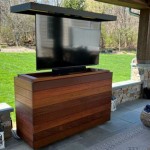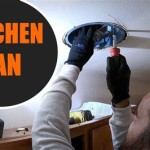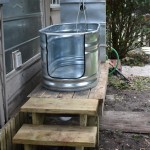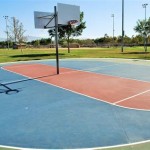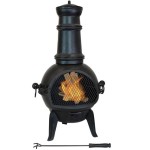Fiddle Leaf Fig Outdoors in Florida: A Comprehensive Guide
The Fiddle Leaf Fig (Ficus lyrata) is a popular houseplant prized for its large, violin-shaped leaves and architectural presence. Originating from the tropical rainforests of West Africa, it thrives in warm, humid environments. While often kept indoors in cooler climates, the question of its viability outdoors in Florida frequently arises. This article will explore the conditions under which a Fiddle Leaf Fig can survive and flourish outdoors in Florida, detailing essential considerations for success.
Florida's subtropical climate presents both opportunities and challenges for growing Fiddle Leaf Figs outdoors. The state's warm temperatures and high humidity levels mimic the plant's natural habitat. However, the intense Florida sun, seasonal temperature fluctuations, and potential for severe weather events require careful planning and management to ensure the plant's well-being.
Optimal Climate Considerations for Outdoor Fiddle Leaf Figs in Florida
Understanding the specific climate zones within Florida is crucial. The state spans multiple USDA plant hardiness zones, ranging from 8a in the northernmost areas to 11b in the southern regions. Fiddle Leaf Figs generally thrive in zones 9b through 11b, where temperatures rarely dip below freezing for extended periods. In areas with occasional light frosts, protective measures, such as covering the plant or bringing it indoors, become necessary.
Temperature plays a significant role. Fiddle Leaf Figs prefer temperatures between 65°F and 75°F (18°C and 24°C). Prolonged exposure to temperatures below 50°F (10°C) can damage the leaves and even kill the plant. Conversely, excessively high temperatures, especially when coupled with direct sunlight, can lead to leaf scorch and stress.
Humidity is another critical factor. Fiddle Leaf Figs require high humidity levels, ideally between 50% and 70%. Florida's naturally humid climate often meets this requirement, particularly during the summer months. However, during drier periods, supplemental measures, such as misting the plant or using a humidifier, may be necessary to maintain optimal humidity levels.
Sunlight is perhaps the most challenging aspect to manage. While Fiddle Leaf Figs require bright light, they are susceptible to leaf burn from direct sunlight, particularly the intense afternoon sun common in Florida. Therefore, careful selection of a planting location that provides filtered sunlight or partial shade is essential. Morning sun is generally preferable to afternoon sun, as it is less intense and less likely to cause damage.
Wind can also be a concern. Strong winds can damage the large leaves of the Fiddle Leaf Fig, causing tearing and breakage. Protecting the plant from strong winds by planting it in a sheltered location or using windbreaks is advisable.
Essential Care Practices for Outdoor Fiddle Leaf Figs in Florida
Providing proper care is paramount to the success of growing Fiddle Leaf Figs outdoors in Florida. This includes careful selection of the planting location, appropriate watering and fertilization, and regular monitoring for pests and diseases.
Soil selection is crucial. Fiddle Leaf Figs require well-draining soil that is rich in organic matter. Avoid heavy clay soils that retain too much moisture, as this can lead to root rot. Amending the soil with compost, peat moss, or other organic materials can improve drainage and provide essential nutrients. The soil pH should be slightly acidic to neutral, ideally between 6.0 and 7.0.
Watering should be done judiciously. Allow the top inch or two of soil to dry out before watering thoroughly. Overwatering is a common mistake that can lead to root rot, while underwatering can cause the leaves to droop and become brown. The frequency of watering will depend on factors such as the weather, the size of the plant, and the type of soil. During the hot, dry months, more frequent watering may be necessary.
Fertilization is essential for healthy growth. Use a balanced fertilizer specifically formulated for Fiddle Leaf Figs, following the manufacturer's instructions. Fertilize during the growing season, which typically runs from spring to fall. Avoid fertilizing during the winter months when the plant is dormant. Over-fertilizing can lead to salt buildup in the soil, which can damage the roots.
Pruning can help maintain the shape and size of the plant. Remove any dead or damaged leaves and branches. Pruning can also encourage branching and fuller growth. The best time to prune is in the spring, before the start of the growing season.
Pest and disease management is crucial. Common pests that can affect Fiddle Leaf Figs include spider mites, mealybugs, and scale. Regularly inspect the plant for signs of infestation and take appropriate action, such as spraying with insecticidal soap or neem oil. Root rot is a common disease that can be caused by overwatering or poor drainage. To prevent root rot, ensure that the soil is well-draining and avoid overwatering.
Acclimatizing the plant is vital when transitioning a Fiddle Leaf Fig from indoors to outdoors. Sudden exposure to the full intensity of the Florida sun can shock the plant and cause leaf burn. Gradually acclimate the plant to outdoor conditions by placing it in a shaded location for a few hours each day, gradually increasing the amount of sunlight it receives over a period of several weeks.
Protecting Fiddle Leaf Figs from Florida's Weather Extremes
Florida's weather can be unpredictable, and protecting Fiddle Leaf Figs from extreme conditions is crucial for their survival. This includes protecting them from freezes, hurricanes, and intense sunlight.
Frost protection is necessary in areas where temperatures occasionally dip below freezing. If a frost is predicted, cover the plant with a blanket or bring it indoors. Wrapping the trunk with burlap can also provide additional protection. For potted Fiddle Leaf Figs, moving them indoors is the easiest and most effective way to protect them from frost.
Hurricane preparedness is essential during hurricane season. Strong winds can easily damage or uproot Fiddle Leaf Figs. For potted plants, bring them indoors or move them to a sheltered location. For plants growing in the ground, prune them to reduce their size and weight. Consider using stakes and ropes to secure the plant to the ground. After a hurricane, inspect the plant for damage and take appropriate action, such as pruning broken branches and treating any wounds.
Sun protection is crucial year-round, but especially during the summer months when the sun is at its strongest. Provide shade for the plant during the hottest part of the day. This can be achieved by planting it under a tree or using shade cloth. Regularly monitor the leaves for signs of sunburn, such as brown spots or discoloration. If the plant is showing signs of sunburn, move it to a more shaded location.
Proper drainage is vital during periods of heavy rainfall. Ensure that the soil is well-draining and that the plant is not sitting in standing water. Consider amending the soil with perlite or other drainage materials to improve drainage. If the plant is in a pot, make sure that the pot has drainage holes.
By understanding the specific requirements of Fiddle Leaf Figs and taking appropriate measures to protect them from Florida's weather extremes, it is possible to grow these beautiful plants successfully outdoors in the Sunshine State. Careful site selection, diligent care, and proactive protection are the keys to success.

Fiddle Leaf Fig

Fiddle Leaf Fig

Caring For A Fiddle Leaf Fig Outdoors

Caring For A Fiddle Leaf Fig Outdoors

Moving The Fiddle Leaf Fig Outdoors Life Love Larson

Enh413 St254 Ficus Lyrata Fiddleleaf Fig

Ficus Lyrata Courtyard Gardens Design Fig Plant Indoor Trees

Sick Fiddle Leaf Fig Plant Take It Outside For A Fast Recovery

Fiddle Leaf Fig

The World S Tree Species Fiddle Leaf Fig Ficus Lyrata

